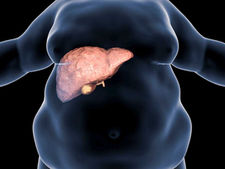
Tennis Elbow
What is Tennis Elbow?
In medical terms, it is called lateral epicondylitis. It is a painful disease caused by overuse of the elbow. Tennis elbow is a condition in which the tendons connecting the forearm muscles on the outside of the elbow become inflamed or sometimes torn.
Forearm muscles and tendons are damaged by overuse. If the same movements are repeated for a long time and continuously, pain and tenderness occur on the outer side of the elbow. For this reason, there is a high probability of this disease being seen in connection with movement in many sports fields such as tennis. When diagnosing the disease, the doctor first listens to the patient's history. Afterwards, a physical examination is performed. A definitive diagnosis is made with examinations such as MRI and x-ray.
What are the symptoms of tennis elbow?
It manifests itself as pain, tenderness, stiffness, burning sensation in the outer part of the elbow (lateral epicondyle), prominence in the elbow, swelling in the elbow, weakness in the forearm, difficulty in lifting the arm, difficulty holding small objects, difficulty and pain when opening a jar or lid.
What are the Risk Factors for Tennis Elbow?
A tendon is a tough cord of tissue that connects muscles to bones. The tendon located in tennis elbow is called extensor carpi radialis brevis. It is usually seen between the ages of 30-50. Occupation appears as a separate risk factor. It is a risk factor in occupational groups that involve repetitive movements of the wrist and arm. Tennis elbow may develop due to synchronized and long-term repetition of some sports using the wrist and arm, such as chefs and butchers.
What are the Treatment Methods for Tennis Elbow?
Tennis elbow may heal on its own in some cases. At the same time, some treatment methods are effective to reduce and improve symptoms and pain. It is possible to reduce inflammation by resting the arm that is painful or has tennis elbow, applying a cold compress, painkillers such as Paracetamol, and non-steroidal anti-inflammatory drugs (NSAIDs). Steroid injections and applications known as tennis elbow tape are also supportive. Apart from medication and some precautions, physical therapy is recommended to reduce the symptoms of the disease. Physical therapy methods such as massage, TENS, electrotherapy, hot-cold application and exercises are performed. Surgical removal of the damaged part of the tendon is used as a last resort depending on the severity of the disease. ESWT method is applied as the gold standard in electrotherapy for tennis elbow and gives successful results.
FOR INFORMATION AND APPOINTMENT, YOU CAN LEAVE YOUR NUMBER OR ASK OUR EXPERTS
YOU CAN LEAVE YOUR NUMBER FOR INFORMATION AND APPOINTMENT AND ASK QUESTIONS TO OUR EXPERTS



-04.png)
-06.png)
-05.png)
-08.png)
-07.png)























